Jeff McMorran, Oregon Seed Certification Service, Oregon State University
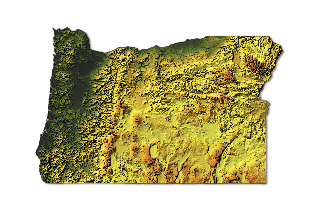 The Oregon seed potato industry continued to primarily produce high-quality G3 class seed, with a total of 2,708 acres of potato seed accepted for certification in Oregon 2012. This is up about 6 percent from last year. There is, however, a growing trend toward the production of early-generation seed, including mini-tuber, Nuclear and G1 class lots. These lots are primarily for the seed growers' "own use" in supplying their own G2-G4 seed requirements. Concern over the high transport costs and the quality of the incoming seed is fueling this trend. In the last 10 years, there has been a 500 percent increase in Oregon G1 seed acreage, and the average size of these Field-Year 2 fields has increased about seven times during this period.
The Oregon seed potato industry continued to primarily produce high-quality G3 class seed, with a total of 2,708 acres of potato seed accepted for certification in Oregon 2012. This is up about 6 percent from last year. There is, however, a growing trend toward the production of early-generation seed, including mini-tuber, Nuclear and G1 class lots. These lots are primarily for the seed growers' "own use" in supplying their own G2-G4 seed requirements. Concern over the high transport costs and the quality of the incoming seed is fueling this trend. In the last 10 years, there has been a 500 percent increase in Oregon G1 seed acreage, and the average size of these Field-Year 2 fields has increased about seven times during this period.
Oregon is also seeing yearly increases in production of specialty varieties. In 2012, a private mini-tuber greenhouse specifically dedicated to this type of production came on line.
Statewide, the most seed produced in 2012 came from the Klamath Falls area, with 1,183 acres of seed, followed closely by North East Oregon, at 1,149 acres, then Central Oregon at 376 acres. There are currently 15 seed growers in the Klamath area (three new seed growers this year), three growers in North East Oregon and two in Central. Additional information on varieties grown in Oregon, and acres certified, may be found on our website at: http://seedcert.oregonstate.edu/potatoes.
The cool, wet spring delayed planting in some areas, but the excellent growing conditions during the season resulted in very good yields of exceptionally nice-looking tubers. During the growing season, Alternaria-like leaf blights were more prevalent in some areas, but relatively low levels of mosaic were observed. So far, no zebra chip or tuber moth was reported in any of the seed areas.
Fall harvest was delayed in some areas due to excessive heat in early September. Quality did not seem to be adversely affected by the heat, but fewer over-sized tubers were produced. The appearance of the tubers this year was reported as generally exceptional, with much lower than usual levels of scab and tuber rots than generally observed.
Randy Knight, one of our five full-time inspectors, retired in 2012 and is now enjoying the good life in Bend, Ore. Efforts are currently underway to replace this position. Those interested can contact our office manager, Julie Hendrix, at julie.hendrix@oregonstate.edu.
Tom Wessels, Plant Services Program Manager, Washington State Department of Agriculture
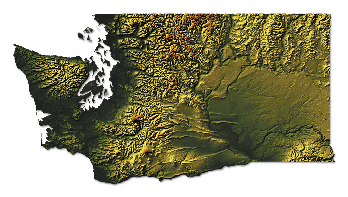 Washington State has two diverse certified-seed potato growing regions that are separated by the Cascade mountain range. The Northwest region enjoys a coastal climate, providing a diurnal cycle of moderate daytime temperatures with relatively cool nights. The Eastern interior enjoys a steppe climate with more predictable weather patterns in this temperate semi-arid region. Both provide ideal growing conditions for the production of vigorous seed potato stock.
Washington State has two diverse certified-seed potato growing regions that are separated by the Cascade mountain range. The Northwest region enjoys a coastal climate, providing a diurnal cycle of moderate daytime temperatures with relatively cool nights. The Eastern interior enjoys a steppe climate with more predictable weather patterns in this temperate semi-arid region. Both provide ideal growing conditions for the production of vigorous seed potato stock.
A total of 2,924 acres of seed potatoes were entered for certification this year. This is 268 acres less than what was planted the previous season. Washington seed growers target niche markets by producing 117 different potato varieties, from heirloom to proprietary to standard large-scale production varieties. The top five seed potato varieties by acreage grown are Chieftain (480), Russet Burbank (322), Umatilla Russet (233) and Cal White (158).
Normally, the presence of late blight disease will occur mid-to-late summer in Washington state. This year, the Northwest region endured a rain-filled spring, with wet conditions extending into July. Late blight disease symptoms manifested very early in the spring, resulting in intensive control measures by seed producers throughout the growing season. Fortunately, these efforts paid off by limiting the incidence of late blight to just a handful of seed lots. Late blight occurrence was not an issue at all in the Eastern region.
For unknown reasons, aphid pressure in both regions was extremely low this year. That said, seed producers intensified pest control methods to include the more expensive neuro-active insecticides along with other control measures. Symptoms of potato leaf roll virus-infected plants were not noted in either region during field inspections this year.
Potato Virus Y was noted in a few seed lots, but at lower levels than previous seasons. Fall weather allowed for excellent harvest conditions for seed stocks going into storage. Inspections at storage revealed generally good quality with very few conditions issues. Overall yields appear to be average with most seed lots, falling into a uniformly smaller profile.
Seed shipments for winter production of commercial potatoes in California's Imperial Valley began in October. Shipments for export to various South American countries will begin early winter. Export market demand from South American counties and British Columbia, Canada has been strong compared to previous seasons.
Willem Schrage, Potato Programs Director, North Dakota State Seed Department
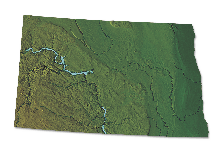 Growing conditions for the seed potato crop in North Dakota were generally favorable, but harvest conditions were less so, being too dry in September and too wet in October. Seed potatoes generally were harvested before the rains kept coming. "Dry land" potatoes were actually in dry land. Early planting, dry and warm conditions were favorable for insects, but kept late blight at bay. The early planting and warm growing season for the seed potato crop should result in early emergence and growth. Large fields of homogenous rich soil also create conditions for a crop that is uniform with much vigor.
Growing conditions for the seed potato crop in North Dakota were generally favorable, but harvest conditions were less so, being too dry in September and too wet in October. Seed potatoes generally were harvested before the rains kept coming. "Dry land" potatoes were actually in dry land. Early planting, dry and warm conditions were favorable for insects, but kept late blight at bay. The early planting and warm growing season for the seed potato crop should result in early emergence and growth. Large fields of homogenous rich soil also create conditions for a crop that is uniform with much vigor.
Varieties are changing in North Dakota. Clearwater Russet, Altura Russet and Blazer Russet have disappeared altogether. Ranger Russet, Umatilla Russet and Russet Burbank are holding their own. In 2012, 14,446 acres of seed potatoes were certified, which makes North Dakota the second-largest seed-potato producing state in the country.
Norland selections covered over 5,000 acres, followed by Russet Burbank, Dakota Pearl, Umatilla Russet, Red LaSoda and Ranger Russet.
The greatest increase in the last five years has been the Dark Red selection of Norland, which has more than doubled to over 3,500 acres. Dakota Pearl also comes out as a winner, with doubling of the acreage compared to five years ago to over 1,500 acres. The varieties Prospect, the Norkotah strains, Bannock Russet, Modoc, Colorado Rose and Dakota Crisp all more than doubled their acreage in the last five years. GoldRush, Shepody and Yukon Gold have lost acreage over the same period in the state.
North Dakota produces several new varieties in smaller acreages, such as Harley Blackwell, Lady Claire and Monticello for chipping, or french fryers as Alpine Russet and Teton Russet, but most varieties for the fresh market such as Colorado Rose, Dakota Rose and yellow flesh varieties such as Melody, Sierra Gold, Agata, Milva, Satina, Augusta, Ambra, Romanz and Bellarosa.
North Dakota seed potato sources can be found in the N.D. Seed Potato Directory, which is available at the North Dakota State Seed Department, P.O. Box 5257, Fargo, N.D., 58105-5257, by calling (701) 231-5400 or by visiting www.ndseed.com.
Steven Marquardt, Manager, Potato Certification Association of Nebraska
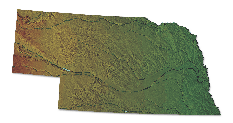 The growing season for seed potatoes in Nebraska is always interesting because, like anywhere else, the "normal" season is rare or at least rarely seen in every field.
The growing season for seed potatoes in Nebraska is always interesting because, like anywhere else, the "normal" season is rare or at least rarely seen in every field.
This year, the drought conditions did affect irrigation timing and tested readiness of most irrigation pivots and producers. Reservoir and aquifer water supplies were reduced to lower levels than recent years. Apparently, noted by inspecting tuber quality so far, the irrigation was able to keep adequate pace with the heat and lack of rain.
The warm spring challenged producers with timing of pre-emergent herbicide applications. Warmer-than-"normal" soils saw emergence up to two weeks earlier than was seen in recent years. It seemed herbicides did not hold weeds back as well in the elevated temperatures this summer.
These warmer-than-usual temperatures tended to reduce sets in some cases so that the size profile is larger, but overall yields are average to well-above average, ranging from 300 to 650cwt/acres in seed.
We are finishing our fourth year of psyllid monitoring in commercial and seed plantings. Each year seems to bring a more intense survey. Last year, we strained to find very low numbers of psyllids all season long in our area with more traps/field and more fields/growers. This year, we more than doubled that effort with a very large psyllid monitoring program.
No late blight has been found in the Nebraska seed areas for several years now and no BRR has been found since 1992. Virus has been very low thanks at least in part to very little disease pressure from nearby commercial plantings, strict sanitation, frequent flushing and a policy by most of our seed growers to not plant back lots suspected of having any amount of mosaic virus. Leafroll hasn't been seen here in seed for years.
Dave Lavway, Division of Animal and Plant Health Director, Maine Department of Agriculture
 Seed potato growers in Maine are close to wrapping up a successful harvest season. As of October 2012, a total of 11,654 acres of seed potatoes, managed by 123 growers, were entered for certification. Maine seed growers have submitted more than 1,250 samples for the post-harvest test conducted in Florida. The most common varieties entered were Frito-Lay propagated varieties, Russet Burbanks and Atlantics.
Seed potato growers in Maine are close to wrapping up a successful harvest season. As of October 2012, a total of 11,654 acres of seed potatoes, managed by 123 growers, were entered for certification. Maine seed growers have submitted more than 1,250 samples for the post-harvest test conducted in Florida. The most common varieties entered were Frito-Lay propagated varieties, Russet Burbanks and Atlantics.
In Maine, 65 percent of the crop is sold for processing, with pre-season contracts; 20 percent is sold as seed potatoes primarily to East Coast producers; and the remaining crop is sold as fresh/tablestock potatoes. This year's seed crop yield was average to above-average, with quality being good-to-excellent. Everything is expected to store well. Last year, there were some storage issues because of the amount of rain during the season, but this season has been a drier year.
Maine originated one of the first and one of the toughest certified seed programs in the country many years ago. Other states have used Maine as a model for developing their own certification standards. Maine Certified and Foundation Seed are grown from disease-free nuclear stock, and being grown in the north means more vigorous and hardier seed.
Our seed certification specialists have completed collecting soil samples from seed growers who may want to export to Canada. Last year, 3,791 samples were analyzed at the USDA Laboratory in Avoca, N.Y., and all were again negative for potato cyst nematodes.
Maine is in the process of revising its certification regulations to condense and make them more readable. The revision also will change the generation designations from N1 through N4 to the more widely accepted Field Year numbering system. These regulations will be finalized in early 2013.
Nina Zidack, Director Montana Seed Potato Certification Program Potato Lab, Montana State University
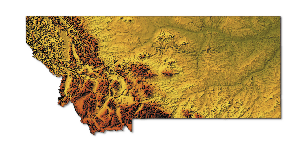 The Montana seed potato crop has all been harvested and growers are reporting an average size crop with excellent quality. Yields across the state were variable with some varieties negatively impacted by the hot, dry weather. All areas are reporting superb quality and a good size profile.
The Montana seed potato crop has all been harvested and growers are reporting an average size crop with excellent quality. Yields across the state were variable with some varieties negatively impacted by the hot, dry weather. All areas are reporting superb quality and a good size profile.
The growing season started out very wet and cool for the first half of the summer in the northwest area of the state while the rest of the state's potato growing areas turned warm and dry by the third week of June, with rainfall well below average. Harvest conditions were very mild through the first week of October when the majority of the crop was harvested. Starting Oct. 6, we sustained some colder nighttime temperatures. While the thermometer dipped into the high teens in the southern part of the state, the soil was still very warm and minimal frost damage occurred.
Montana seed potato acreage is up slightly this year with 10,427 acres, compared to 10,187 acres in 2011. This represents the second-highest acreage in program history, which was 10,879 acres registered in 2000. The generational composition of the acreage has changed dramatically in those 12 years, with more early-generation potatoes produced. While the total acreage was higher in 2000, during the current crop year the acreage of G1 was 356 acres and the acreage of G2 was 2,865 acres, compared to 272 and 2,080 acres for those generations in 2000.
In 2012, there were 70 varieties registered for certification. Russet Burbank is still king with 4,612 acres, followed by Norkotah (all lines, 1,357 acres), Umatilla (1,283 acres), Ranger (1,066 acres) and Alturas (742 acres). In addition, Montana produces a number of new Russet cultivars as well as heirloom and specialty varieties. Montana is expanding its marketing of both common and specialty varieties through publication and distribution of a directory specifically for garden potato seed. Our Montana Certified Seed Potato Directory and our Wholesale Seed Potato Directory (garden seed) can be found on our website at www.montanaspud.org.
Gary "Buzz" Smith, Seed Potato Certification Manager, Idaho Crop Improvement Association
 The 2012 season has been interesting and challenging for Idaho Certified Seed growers. Potato plants grew fast and had lots of foliage. Daughter tubers set on fast and bulked up quickly. Potato growers had to kill vine much sooner than in the past years. I can never remember in all the 35 years I have worked for Idaho Crop Improvement Association, Inc., potatoes being killed as early as the 2012 crop. Harvest went well for most of our potato seed growers. Most seed potatoes have gone into storage mature and without field frost.
The 2012 season has been interesting and challenging for Idaho Certified Seed growers. Potato plants grew fast and had lots of foliage. Daughter tubers set on fast and bulked up quickly. Potato growers had to kill vine much sooner than in the past years. I can never remember in all the 35 years I have worked for Idaho Crop Improvement Association, Inc., potatoes being killed as early as the 2012 crop. Harvest went well for most of our potato seed growers. Most seed potatoes have gone into storage mature and without field frost.
In Idaho in 2012, 35,889 acres were certified-about 10 percent more than the 34,766 certified in 2011. Russet Burbank remains the leading variety at 15,040 acres, or about 41.9 percent of the total crop, followed by Ranger Russet, Alturas and Russet Norkotah 3. One hundred and ninety two varieties and selections were certified.
Post-harvest testing soon will be under way in the Imperial Valley in Southern California. This location has been in use since 2006 and has proven to be a reliable area for winter testing. Starting in 2007, the Idaho program made a significant change to the winter test protocol, in that all emerged plants are leaf sampled and ELISA tested for mosaic (PVY and PVA) in the ICIA laboratory. Prior to the change, only plants showing visual virus symptoms were lab tested. The advantage to testing all emerged plants for mosaic by ELISA is that the test detects viruses in plants that are not exhibiting disease symptoms. All other factors determining lot eligibility including percent potato leafroll virus and seed-borne chemical injury are determined by visual row inspections. As it is no longer necessary to wait until sufficient numbers of plants have reached a size suitable for visual mosaic detection, testing and reporting can begin earlier in the winter.
Also, starting in 2009, another improvement in protocol began where about one-third of the lots were collected, treated and planted in mid-October. That is two weeks earlier than what was customary. The remaining lots were planted in early November. Leaf sampling takes place during January and early February. A field day also takes place in early February, allowing seed growers and representatives of seed buyers an opportunity to visit the test plot and evaluate their test rows. Seed buyers often use a combination of lab results and visual observation of test rows when making buying decisions.
Michael Horken, Minnesota Department of Agriculture
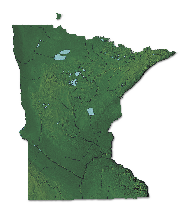 In 2012, 6,081 acres of seed potatoes were certified in Minnesota, which was down from the 6,975 acres certified in 2011. The Norland variety, which includes the Red and Dark Red selections, has the largest combined acreage with 1,496 acres. Russet Burbank is second with 1,353 acres. Other notable red varieties include Dakota Rose with 390 acres, Red Pontiac with 311 acres, Red LaSoda with 315 acres and Chieftain with 273 acres. The three major white varieties are Dakota Pearl with 346 acres, Kennebec with 319 acres and CalWhite with 151 acres. Overall 91 varieties and 18 numbered clonal selections were certified in 2012.
In 2012, 6,081 acres of seed potatoes were certified in Minnesota, which was down from the 6,975 acres certified in 2011. The Norland variety, which includes the Red and Dark Red selections, has the largest combined acreage with 1,496 acres. Russet Burbank is second with 1,353 acres. Other notable red varieties include Dakota Rose with 390 acres, Red Pontiac with 311 acres, Red LaSoda with 315 acres and Chieftain with 273 acres. The three major white varieties are Dakota Pearl with 346 acres, Kennebec with 319 acres and CalWhite with 151 acres. Overall 91 varieties and 18 numbered clonal selections were certified in 2012.
With a warmer-than-average winter and very little snow cover, growers were able to start planting earlier than normal, finishing about one or two weeks ahead of normal. The spring started out with ideal growing conditions. Summer growing conditions, however were not so ideal. Most of the summer was hot and extremely dry in most of our growing areas.
This did play toll on yields; however, growers were surprised and pleased with their yields, given the dry conditions. With harvest approaching, some of the growers-especially those growing reds for the fresh market-delayed harvest due to lack of moisture that was causing some bruising and skinning of the potatoes. Most of the seed acres were harvested before the rain and an early snow that came in October, however, about 80 acres of seed did not get harvested before the below freezing temperatures set in.
A few growers have started shipping seed to the southern states and also exporting seed to Uruguay and the quality has been very good.
The post-harvest winter test plot has been planted in Hawaii. This test is vital to keep viruses, such as Potato Virus Y and Potato Leafroll, at an economic threshold that's acceptable within industry. This is a mandatory requirement for all potatoes entering the certification process in all states. Readings will take place the first three weeks of January with the results sent out to the seed growers by the end of month.